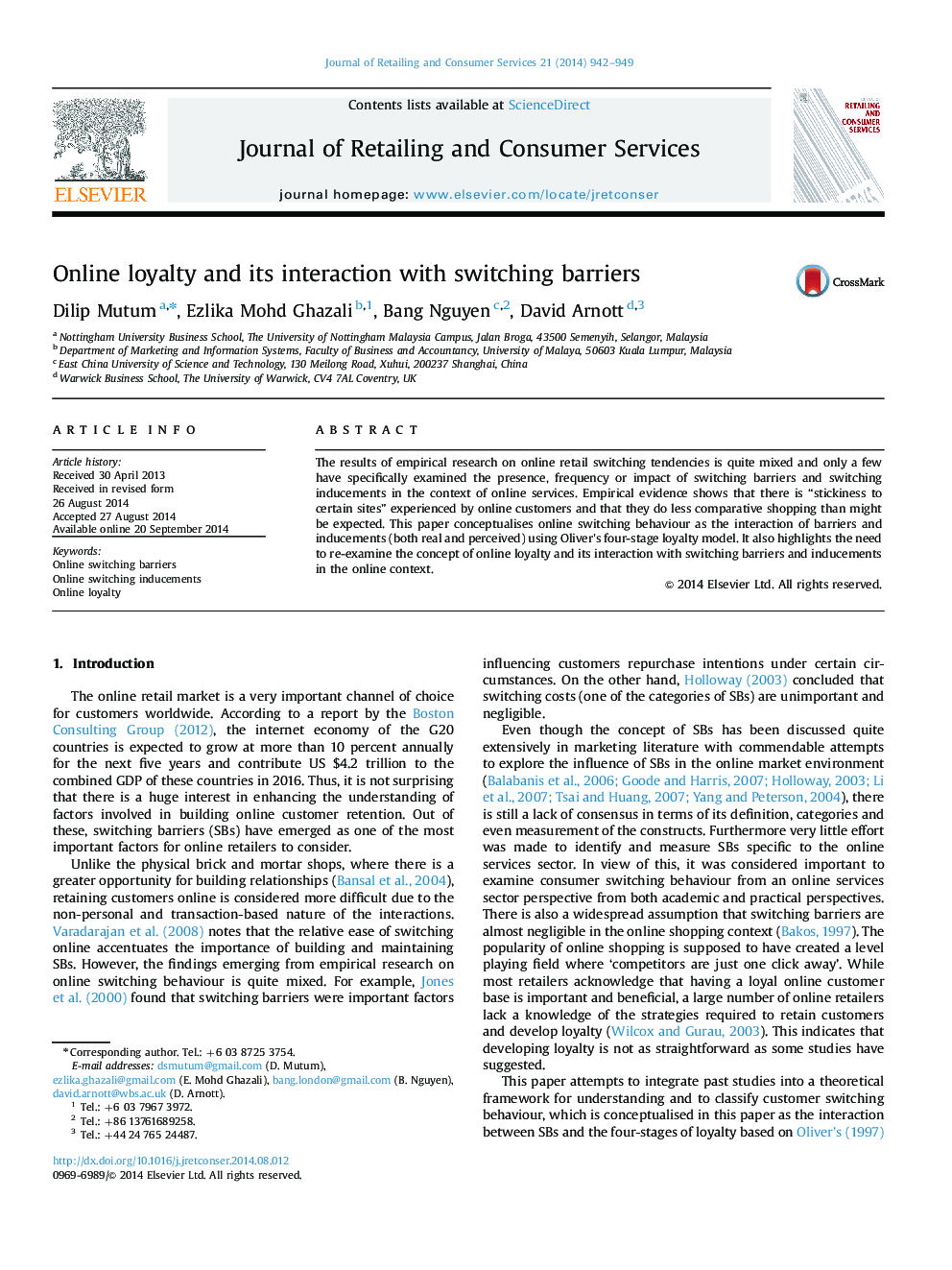| Article ID | Journal | Published Year | Pages | File Type |
|---|---|---|---|---|
| 1028957 | Journal of Retailing and Consumer Services | 2014 | 8 Pages |
•Oliver׳s 4 stage loyalty model was further expanded to include online switching.•This paper conceptualises switching behaviour in the online context.•Online switching is seen as the interaction of barriers and inducements – both real and perceived.•Four potential areas for further scholarly enquiry have been identified.
The results of empirical research on online retail switching tendencies is quite mixed and only a few have specifically examined the presence, frequency or impact of switching barriers and switching inducements in the context of online services. Empirical evidence shows that there is “stickiness to certain sites” experienced by online customers and that they do less comparative shopping than might be expected. This paper conceptualises online switching behaviour as the interaction of barriers and inducements (both real and perceived) using Oliver׳s four-stage loyalty model. It also highlights the need to re-examine the concept of online loyalty and its interaction with switching barriers and inducements in the online context.
